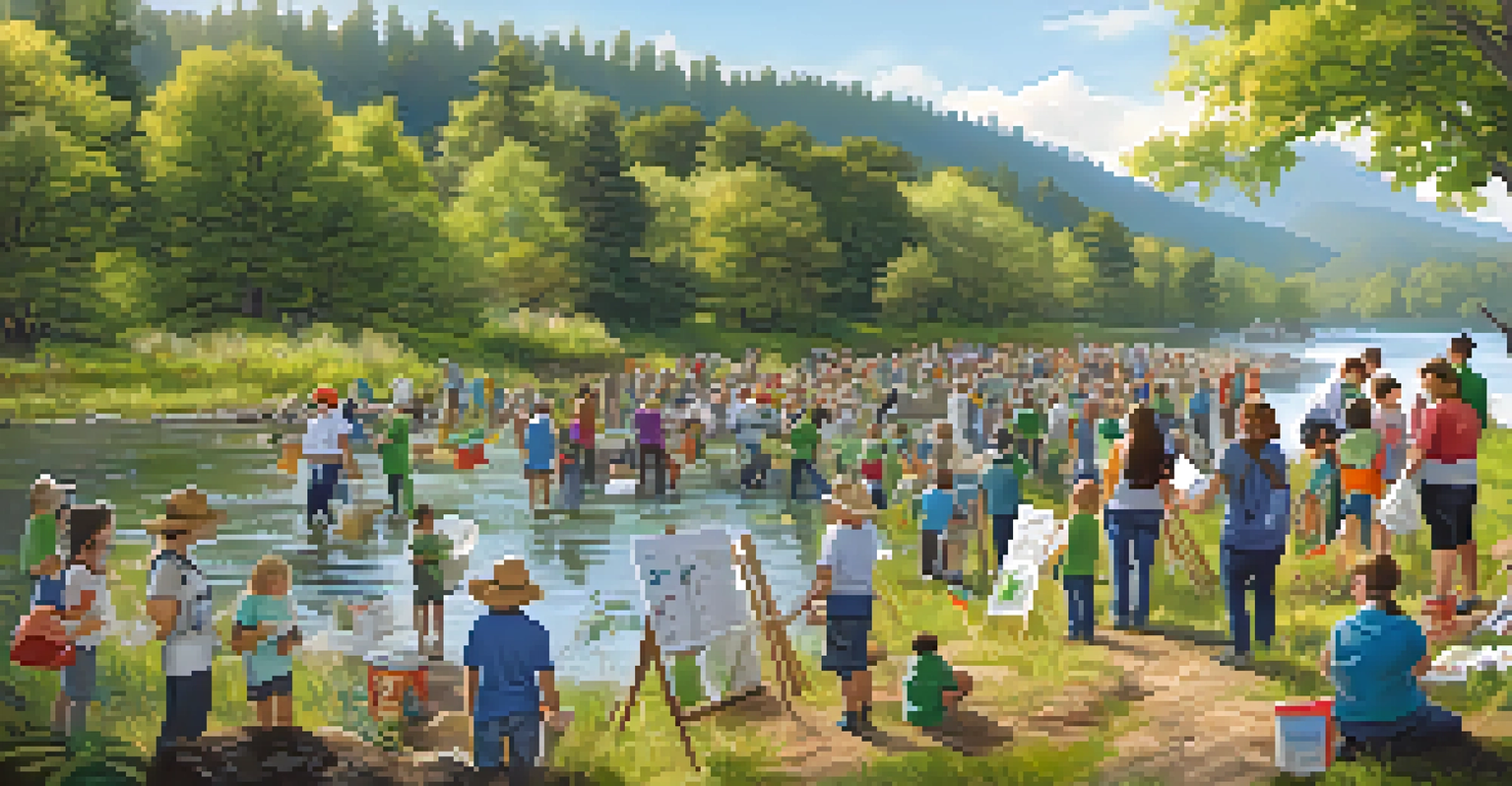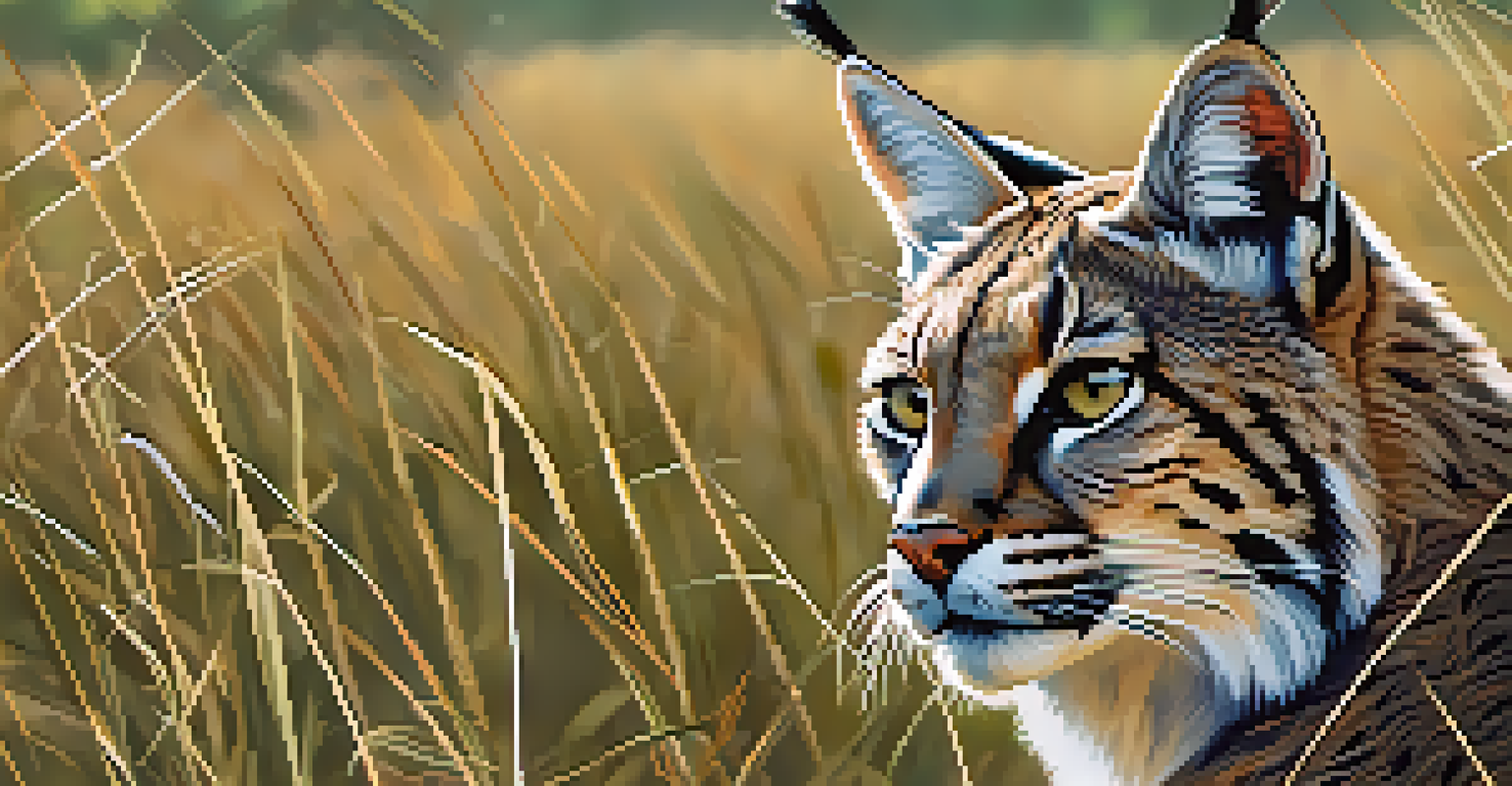Legislation and Policy: Supporting Georgia's Wildlife Initiatives

Understanding Georgia's Wildlife Conservation Laws
Georgia has a rich biodiversity that is supported by various wildlife conservation laws. These regulations are designed to protect endangered species and their habitats, ensuring a balanced ecosystem. By understanding these laws, citizens can better appreciate the efforts made to preserve wildlife in their communities.
In every walk with nature, one receives far more than he seeks.
The Georgia Department of Natural Resources (DNR) plays a crucial role in enforcing these laws. They work alongside local organizations and stakeholders to develop strategies that facilitate sustainable practices. This collaboration not only aids in wildlife protection but also fosters community involvement.
Moreover, public awareness of these laws is essential for their success. When people know about wildlife regulations, they are more likely to respect them, leading to better outcomes for Georgia's diverse species. Education campaigns can help bridge this knowledge gap.
Key Policies Supporting Wildlife Restoration
Several key policies in Georgia prioritize wildlife restoration and habitat improvement. These initiatives focus on rehabilitating ecosystems that have been degraded over time. For instance, programs aimed at reforesting areas provide essential habitats for various species.

One notable policy is the Georgia Wildlife Action Plan, which outlines specific steps to conserve species at risk of extinction. This comprehensive approach ensures that resources are allocated efficiently to areas that need the most attention. The involvement of local communities is also a significant aspect of this policy.
Community Engagement Drives Success
Involving local citizens in wildlife initiatives ensures that conservation efforts are relatable, effective, and based on the best insights into local ecosystems.
Ultimately, these policies create a framework for sustainable wildlife management. They establish guidelines that not only protect endangered species but also encourage responsible interaction with nature. This balance is key to fostering a healthy environment for future generations.
The Role of Community Engagement in Wildlife Initiatives
Community engagement is vital for the success of wildlife initiatives in Georgia. Local citizens often have the best insights into their ecosystems and can help identify areas needing attention. Their involvement ensures that conservation efforts are relatable and effective.
The earth does not belong to us: we belong to the earth.
Grassroots organizations play a critical role in mobilizing communities for wildlife protection. These groups often conduct workshops, cleanup events, and educational programs to raise awareness. By fostering a sense of ownership among residents, they empower individuals to take action.
Furthermore, when communities collaborate with government agencies, the impact can be significant. This partnership can lead to innovative solutions and increased funding for conservation projects. Together, they can create a robust network dedicated to preserving Georgia's wildlife.
Funding Sources for Wildlife Conservation in Georgia
Funding is a cornerstone of effective wildlife conservation, and Georgia has various sources to support these initiatives. State and federal grants are vital, as they provide necessary resources for projects aimed at habitat restoration and species recovery. This financial backing helps ensure long-term sustainability.
In addition to government funding, private donations and corporate sponsorships also play a crucial role. Many organizations partner with businesses to create programs that benefit both wildlife and the community. This collaborative funding model can lead to innovative conservation strategies.
Innovative Tech Enhances Monitoring
Technological advancements like GPS tracking and citizen science apps are transforming how wildlife is monitored, leading to more informed conservation strategies.
Lastly, fundraising events and initiatives raise awareness and generate support for wildlife causes. These events not only provide financial assistance but also engage the public in meaningful ways, fostering a culture of conservation. Together, these funding avenues strengthen Georgia's commitment to wildlife protection.
Innovative Technologies Supporting Wildlife Monitoring
Technology is revolutionizing the way wildlife is monitored and protected in Georgia. Tools like GPS tracking and camera traps allow researchers to gather data on animal movements and populations. This information is crucial for making informed decisions about conservation strategies.
Moreover, citizen science apps enable everyday Georgians to contribute to wildlife monitoring efforts. By reporting sightings or unusual behavior, individuals can help scientists track changes in wildlife populations. This collective effort enhances our understanding of local ecosystems.
As technology continues to advance, so too will the methods used to protect wildlife. Innovative solutions such as drone surveillance and remote sensing can provide insights that were previously unattainable. Embracing these technologies will lead to more effective conservation practices.
Collaborative Efforts Between Agencies and Organizations
Collaboration is essential for the success of wildlife initiatives in Georgia. Various agencies, such as the Georgia DNR and the U.S. Fish and Wildlife Service, work together to create comprehensive conservation plans. By pooling resources and expertise, they can tackle complex wildlife issues more effectively.
Nonprofit organizations also play a vital role in this collaborative landscape. They often bring valuable grassroots knowledge and community connections that enhance conservation efforts. These partnerships can lead to more impactful projects that resonate with local populations.
Collaboration Boosts Conservation Efforts
The partnership between various agencies, nonprofits, and communities fosters a shared responsibility for wildlife protection, enhancing the effectiveness of conservation projects.
Ultimately, these collaborative efforts foster a sense of shared responsibility for wildlife protection. When different stakeholders unite for a common cause, the potential for positive change increases exponentially. Together, they can create a brighter future for Georgia's wildlife.
The Future of Wildlife Legislation in Georgia
Looking ahead, the future of wildlife legislation in Georgia is promising but requires continuous effort. As environmental challenges evolve, so too must the laws and policies that protect wildlife. Adaptability and proactive measures will be key in addressing emerging threats.
Advocacy groups are already pushing for stronger regulations that focus on climate change and habitat loss. Engaging the public in these discussions is crucial for shaping effective legislation. When citizens voice their concerns, lawmakers are more likely to take action.

In conclusion, the future of wildlife legislation in Georgia will depend on collaboration, innovation, and community engagement. By staying informed and involved, Georgians can ensure that their wildlife initiatives remain robust and effective. Together, they can safeguard the natural treasures of their state.